(My underwater photos are linked here. Go ahead hurt my feelings. Link is at the end as well.)
Back again - this was our fifth trip to Indonesia for diving and our fourth to the Wakatobi region. It's not a journey taken lightly - over 84 total hours of travel time this trip. So why do we do it?
It's all about getting to the Coral Triangle, the most diverse region on the planet. There are 605 coral species vs. 61 in the Caribbean. 37% of the world's coral reef fishes are at home in the Coral Triangle; there are 58 species of Butterflyfish vs. 5 in the Caribbean. The reefs are in outstanding condition (even with ocean acidification and temperature rises which are killing the corals). And the waters are warm and clear.
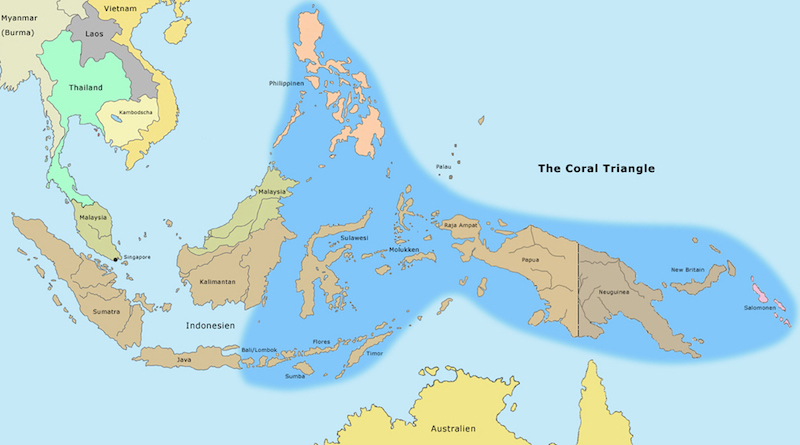
This trip included milestones for both of us. And came after an "interesting" year for sure.
Valerie's 500th dive
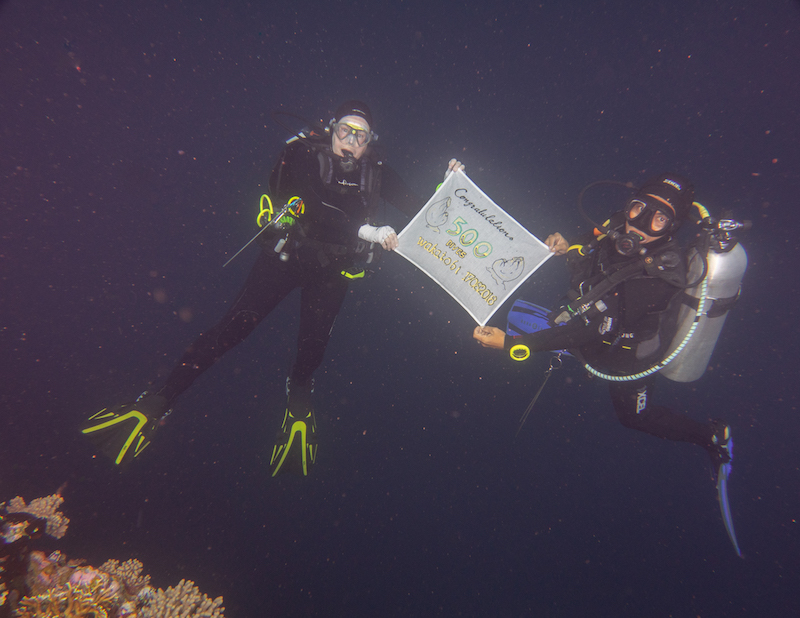
and Andy's 600th dive
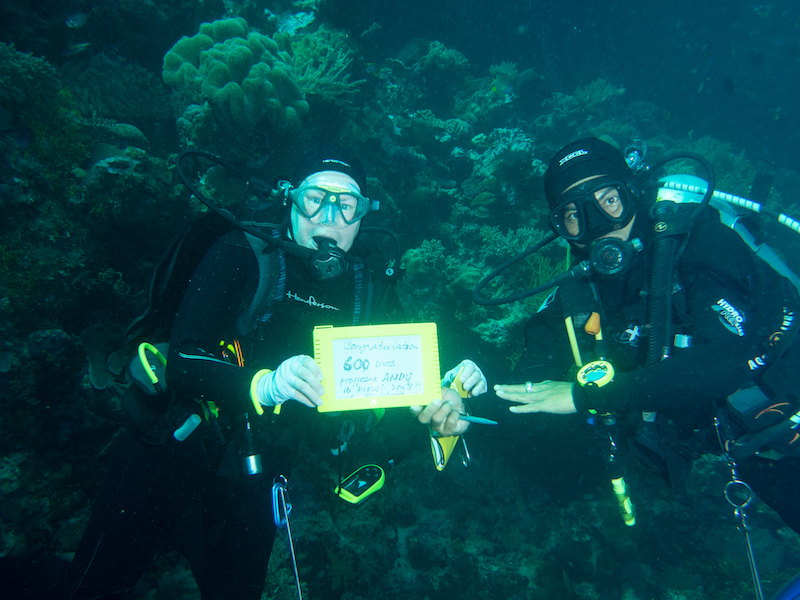
Each was celebrated with appropriate flare in the diving hall
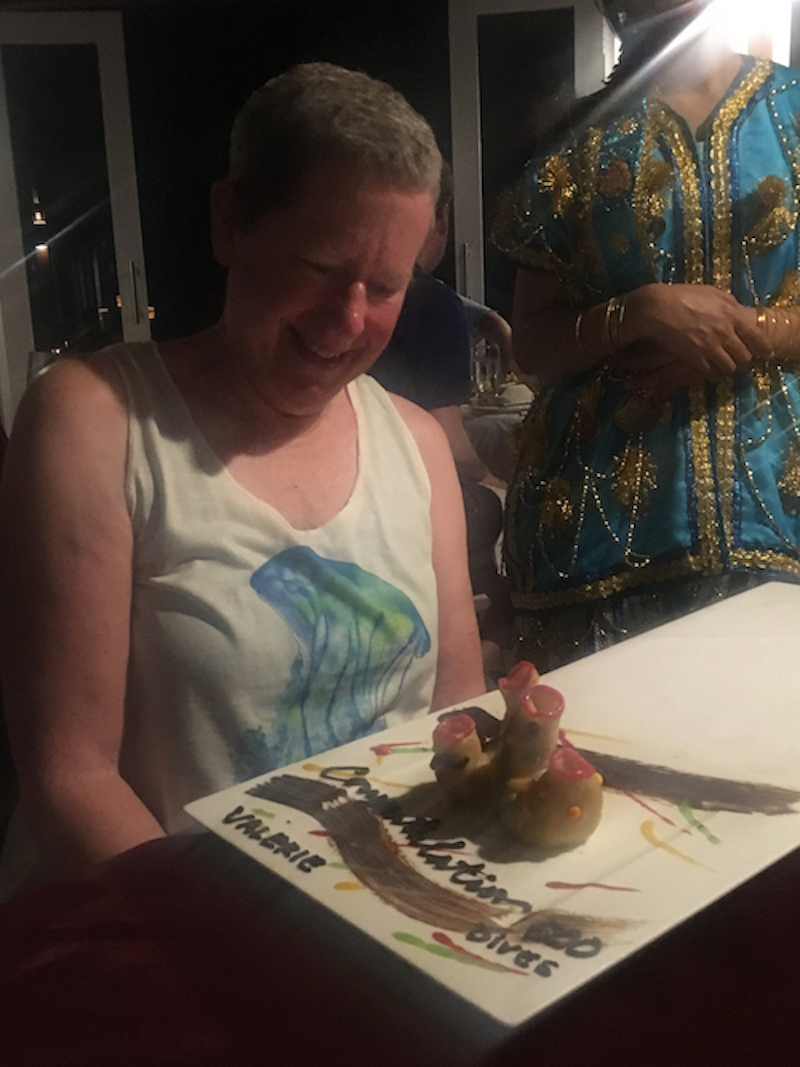
Those are marzipan tunicates for Valerie
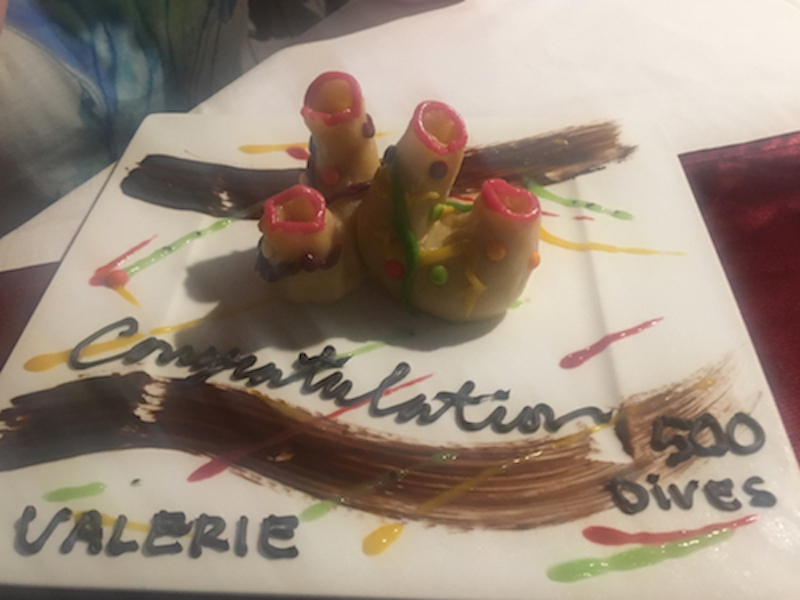
and cake and marzipan nudibranchs for Andy
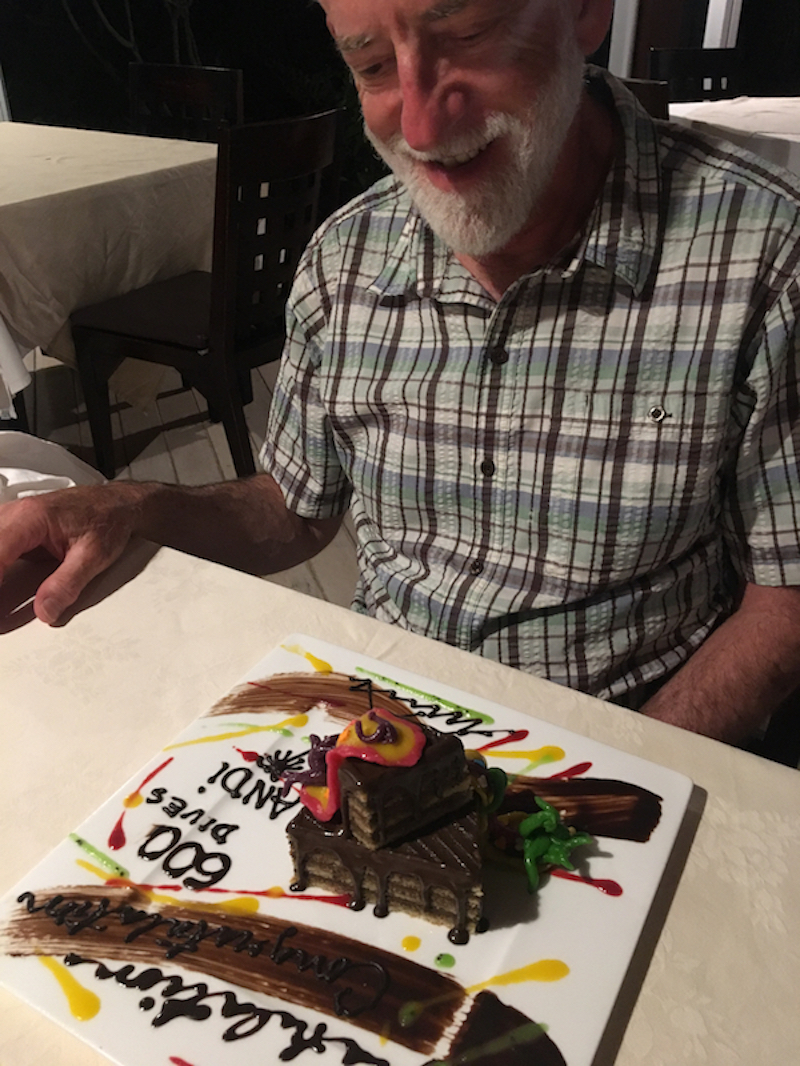
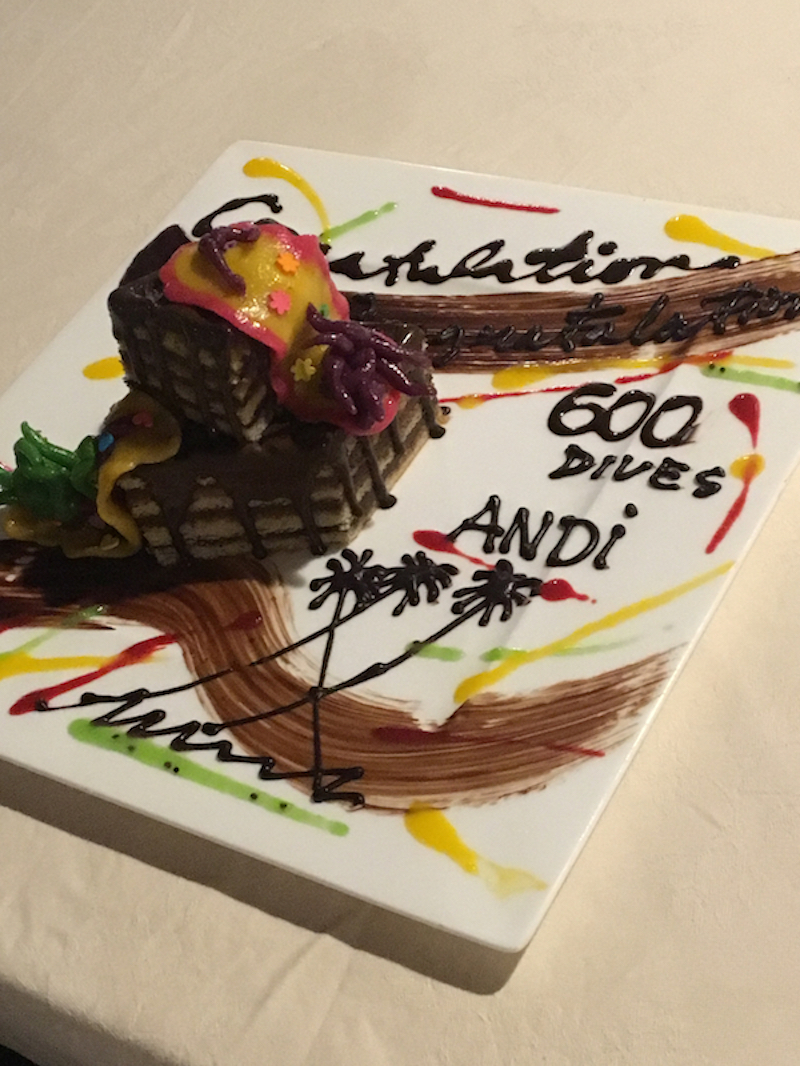
We chose to return to the Wakatobi Dive Resort where we had been in 2012, 2013 and 2015. It's that good (see the 2015 writeup for more details about how we were treated). This time we again added a week on Wakatobi's liveaboard, the Pelagian . (Wakatobi is an amalgamation of the names of the main islands that form an archipelago off Southeast Sulawesi - Wangi-wangi, Kaledupa, Tomia and Binongko.)
We departed on August 7th, flew DCA -> JFK -> HKG -> DPS; our return was August 30th, flying DPS -> HKG -> JFK (with a stop in Vancouver) -> DCA arriving on August 31st. Other than the nights on the airplanes, we spent one night on Bali, ten at Wakatobi, seven on the Pelagian and a final three on Bali.
Some bottom line numbers
Andy
52 dives with 57 hours 22 minutes underwater
Maximum depth 91 feet
8 night dives
600 underwater photographs taken and kept (but most not included in this report!)
Valerie
32 dives with 35 hours 34 minutes underwater
Maximum depth 81 feet
Because of the vagaries of mileage awards for airline travel, we had three nights on Bali after diving which we spent at the Amandari in Ubud. We had never spent much time just relaxing after the diving but it was so wonderful (including two massages each) that this will definitely be a feature of all future trips.
The Denpasar Airport is absolutely gorgeous, both the international and the domestic terminals. Wakatobi uses the large Indonesian airline Garuda for their charter flight to Tomia Island, a 2-1/2 hour flight when all goes well, which it did. The flight is now much more comfortable.
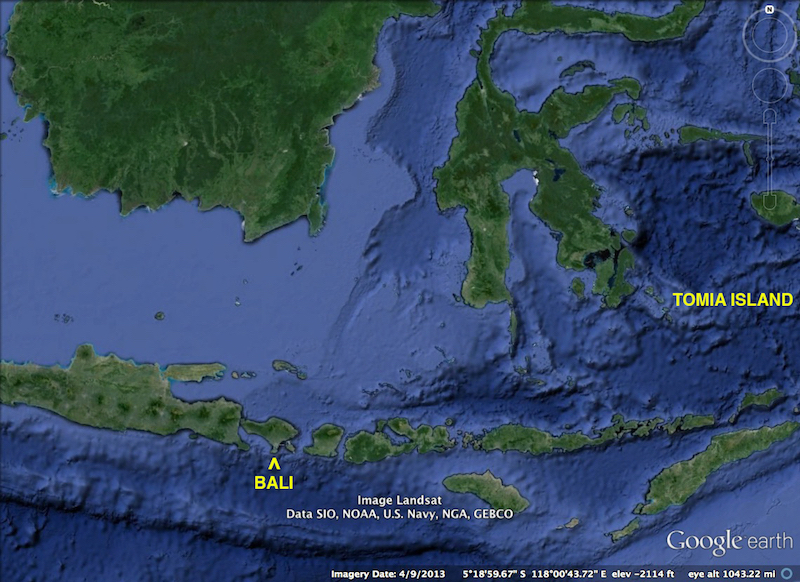
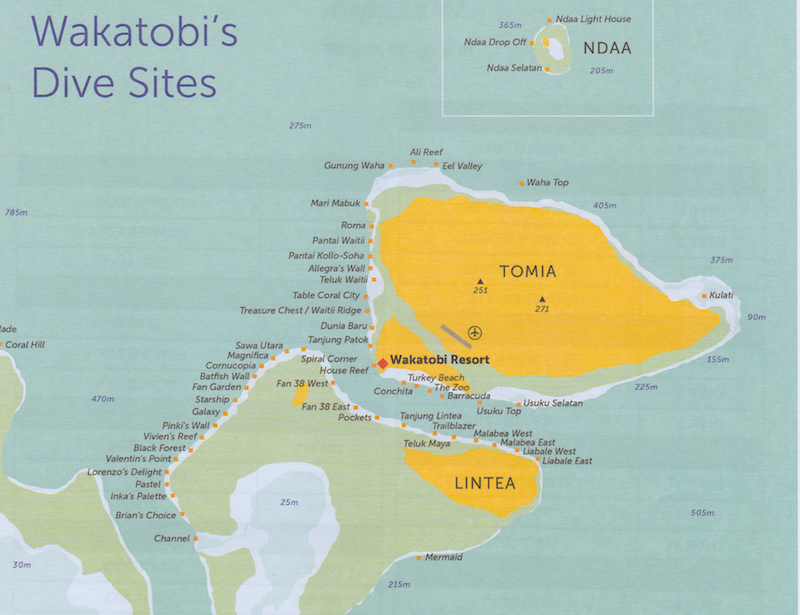
You can see the landing strip and the large number of named potential dive sites from the resort. The winds were consistent from the southeast this year (August is in the windy season) so we didn't do much diving to the southeast which includes some of our favorite sites. Fortunately there are a large number of sites which are protected from southeast swells by the reefs.
From the landing strip, they drove us to a waiting boat and then we went on to the resort.
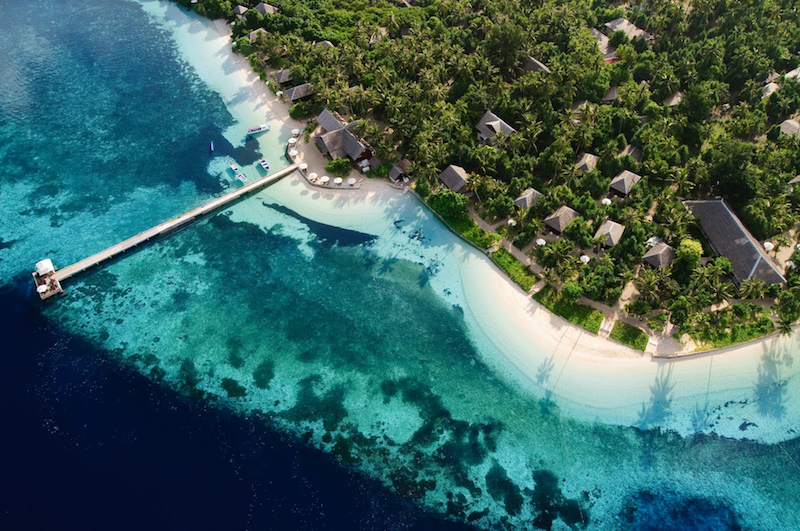
You can easily see the house reef - considered the best house reef in the world - which is available for diving 24/7.
The longhouse (in the center) houses the office and dive shop and was the original entire resort, the restaurant is to the right, the jetty is where the boats are at high tide (they moor off the reef at low tide and you are shuttled by small boat), bungalows line the shore and our villa was beachfront at the far left of the photo.
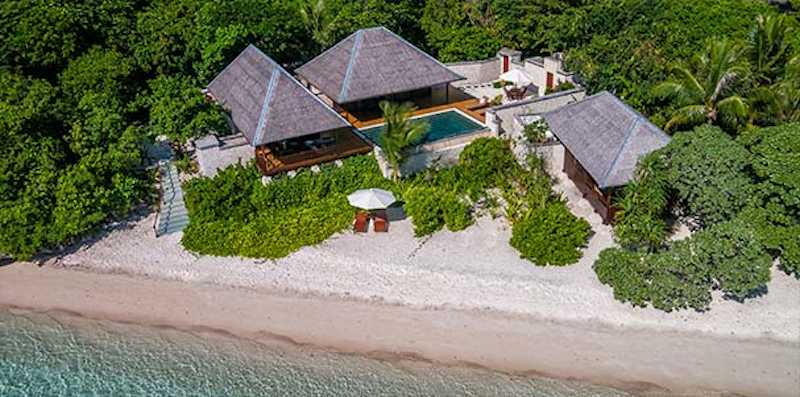
We were greeted
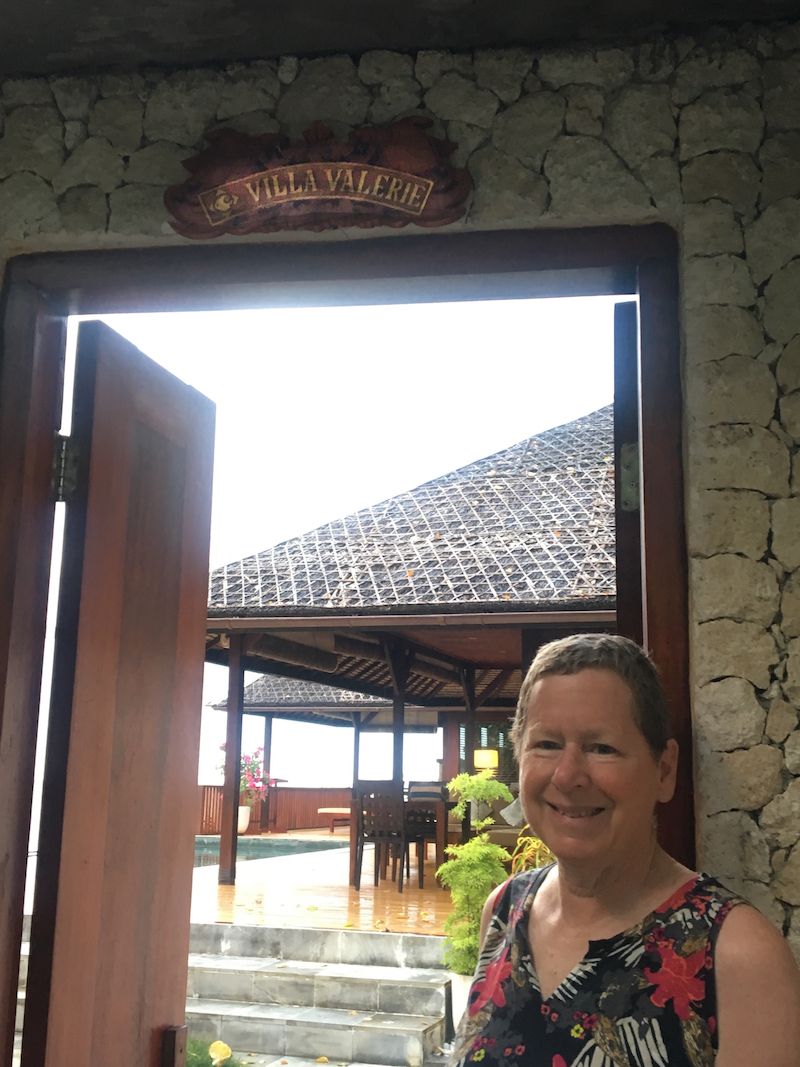
(Couldn't believe the nameplate - turns out they carve one for each guest and you take it home - where it's now over Valerie's painting spot.)
We were welcomed
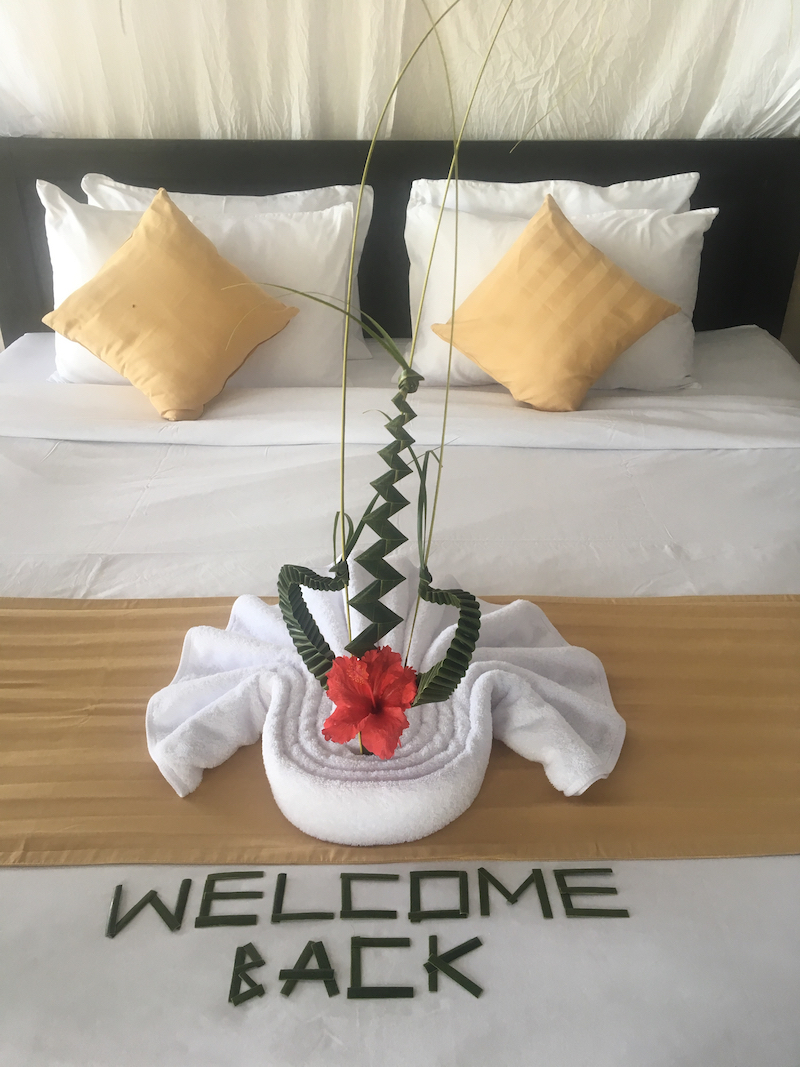
beautiful deck and plunge pool
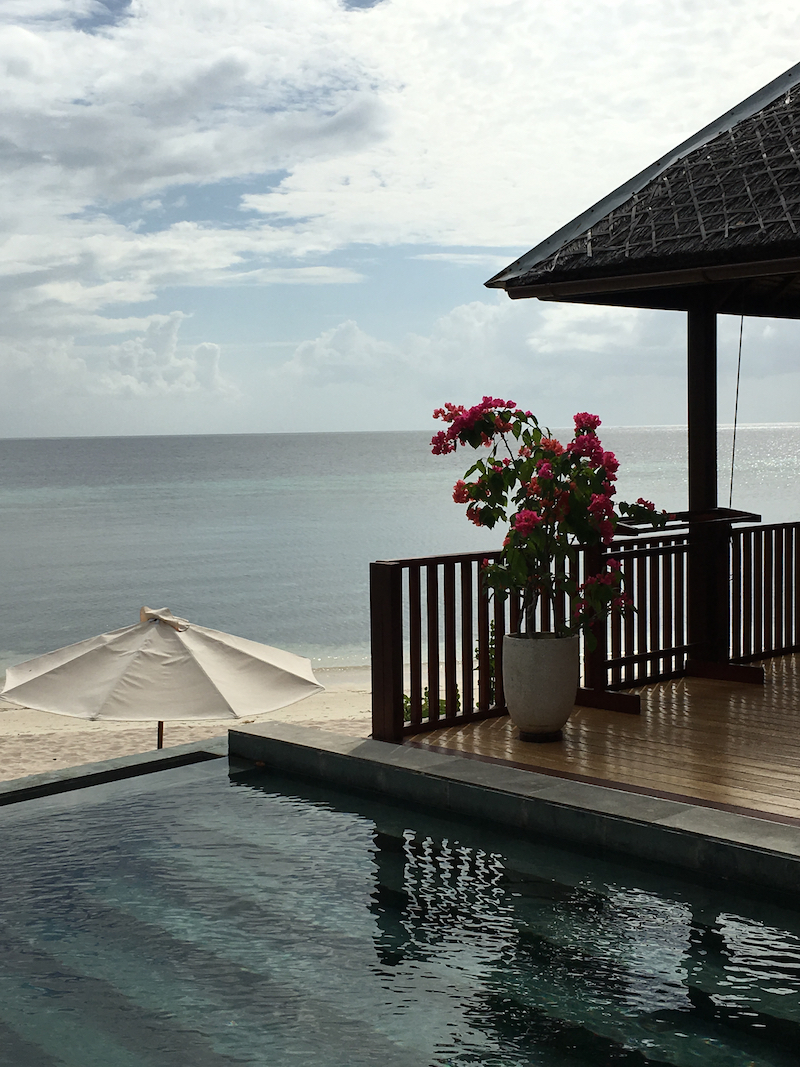
and two outdoor showers
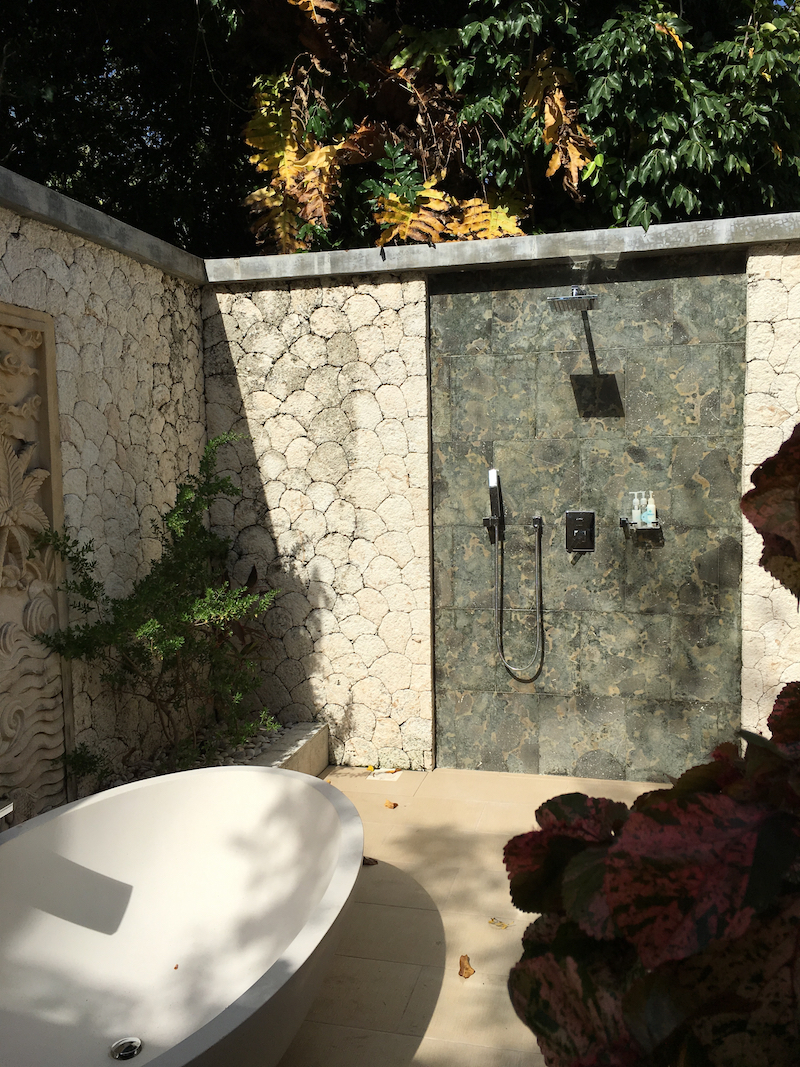
It's no shoes at the resort
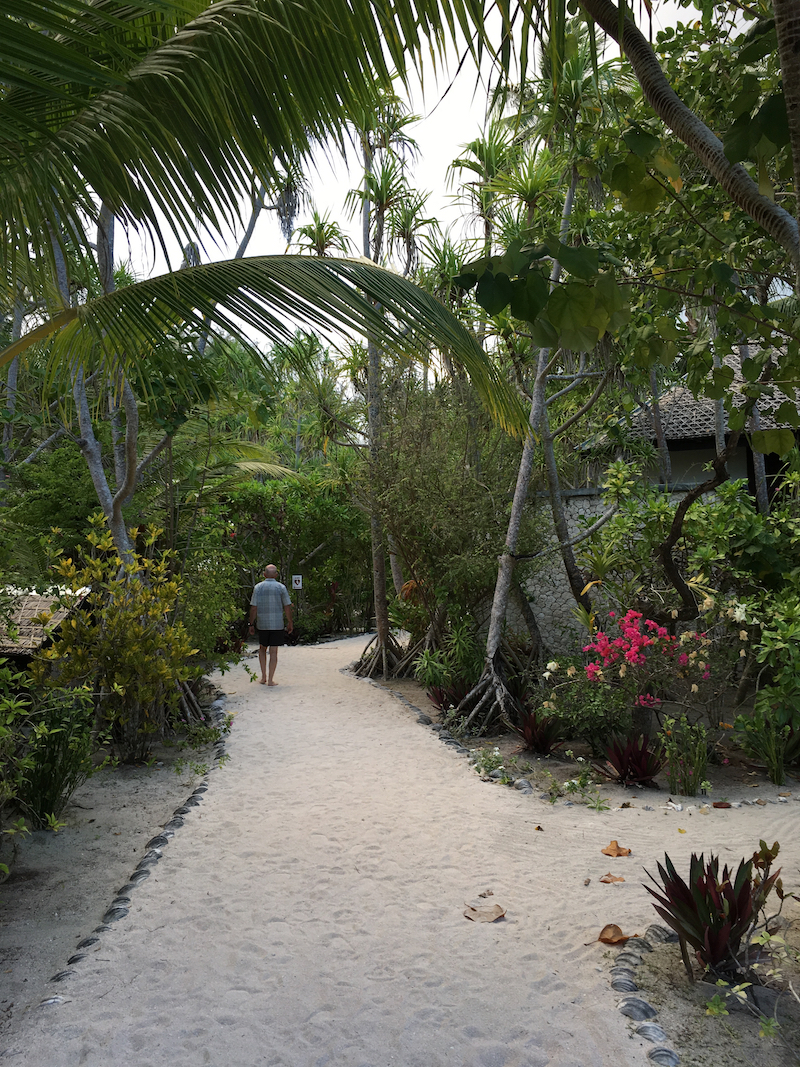
There's reminders that this is still very much an Indonesian community with frequent freighter traffic
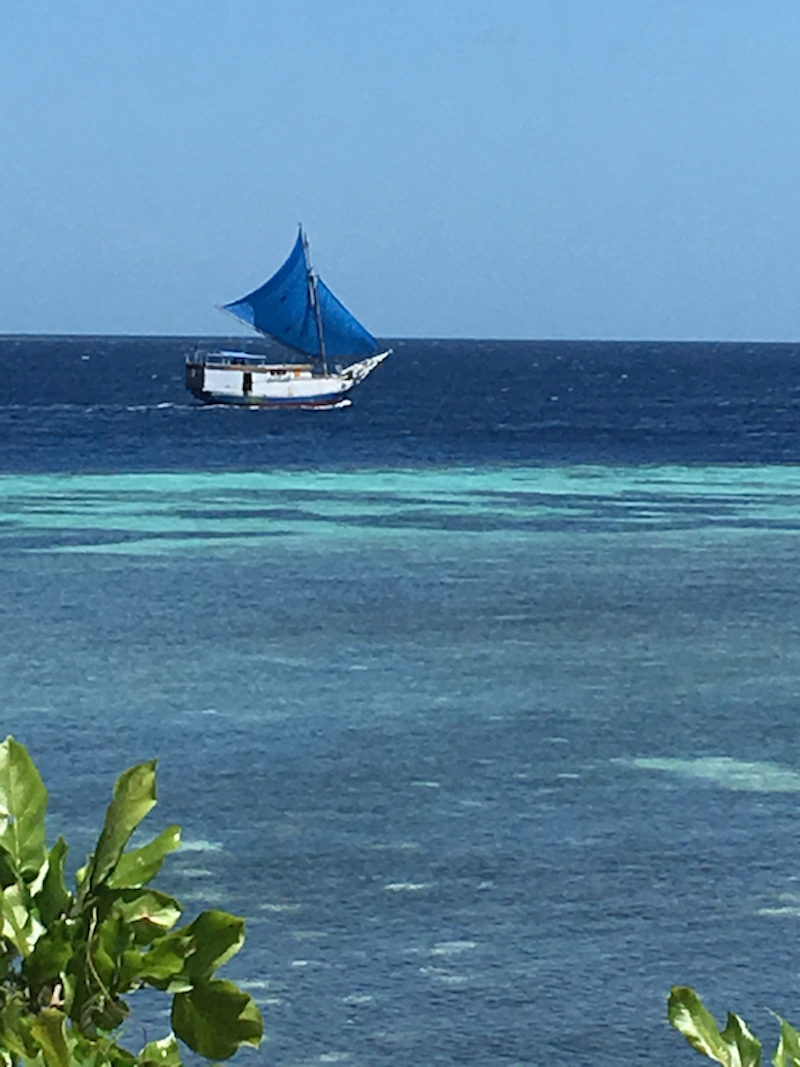
and still active fishing (these are shelters)
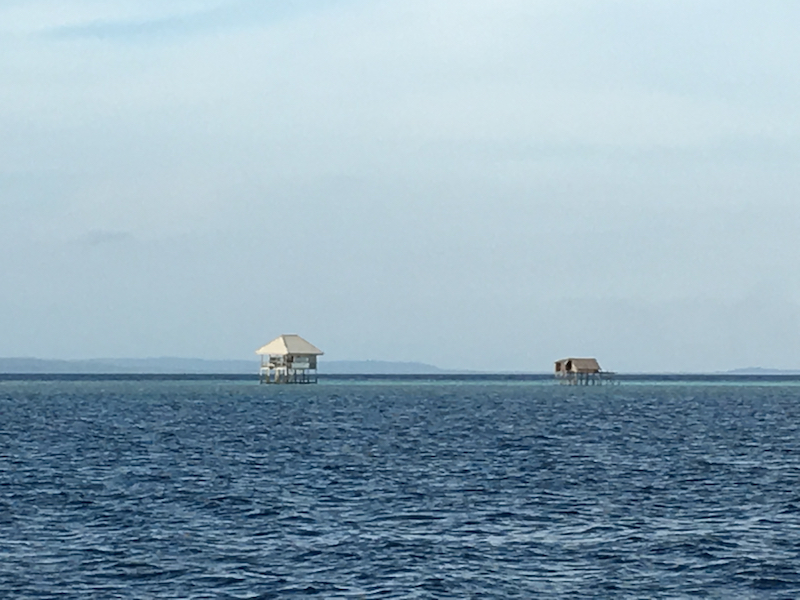
At low tide there were always fisherman walking on the reefs looking for edibles. While perhaps not environmentally the best, it is far better than dynamite fishing (dropping dynamite on reefs and collecting what floats to the top) which was previously practiced. Resorts such as Wakatobi lead the way in providing an alternative revenue source for the people in the area (each diver contributes as do the many staff positions at the resort).

The purpose-built Indonesian-style dive boats are great and staff are always there to help you as needed
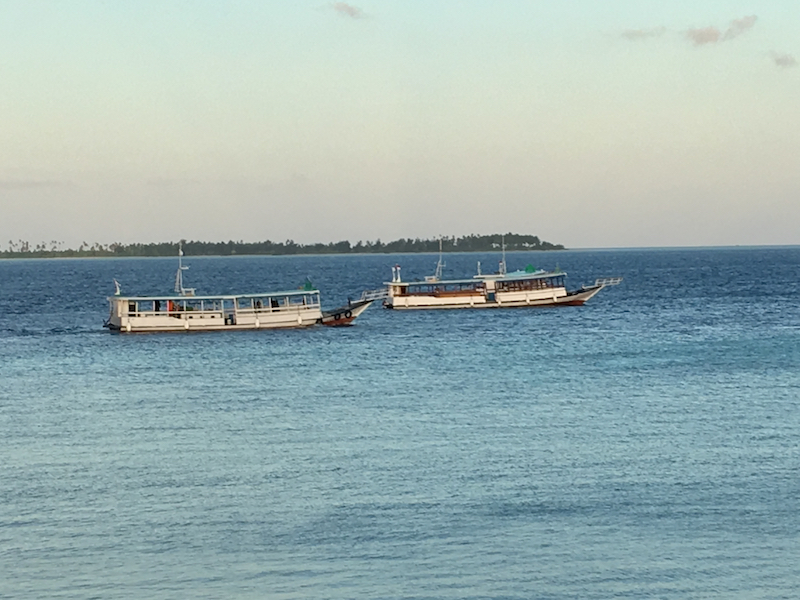
Our dive guide was friend and underwater Professor Kaz
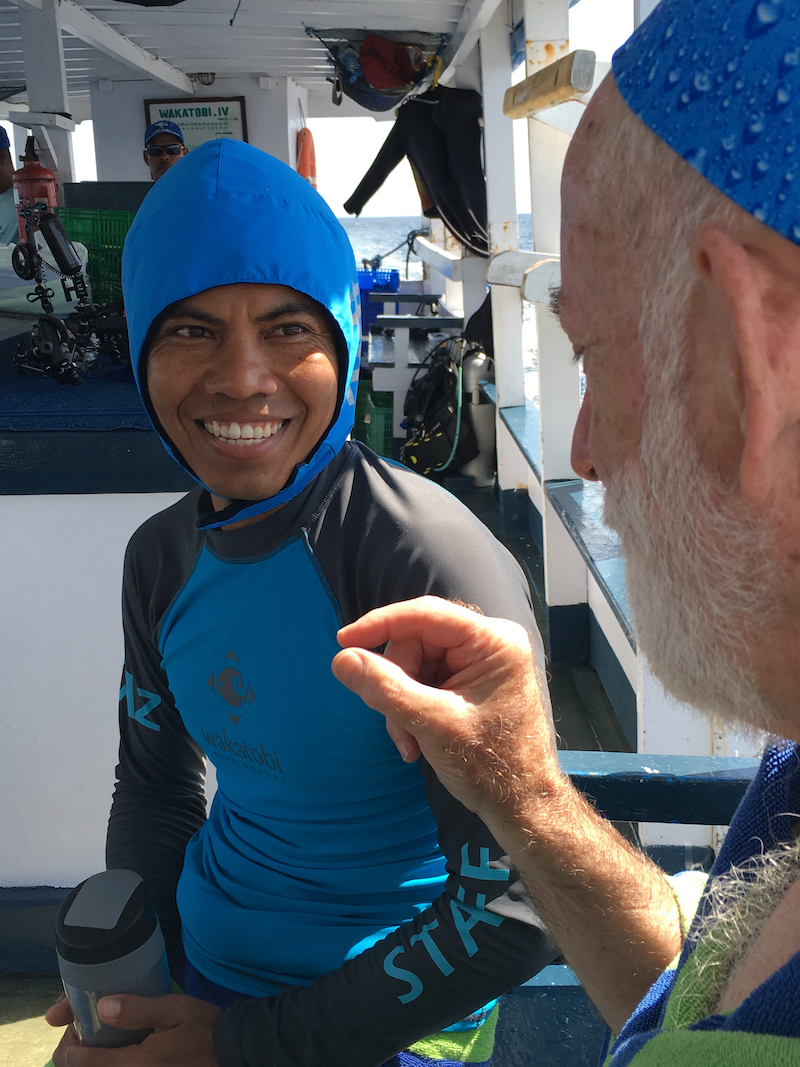
We also dove with Andrea Balin and Nicola Jaeger.
By the way, underwater currents are prevalent so you pop up an inflated buoy when you are done with your dive and the boat comes and gets you - saves loads of effort. You can see one in this photo
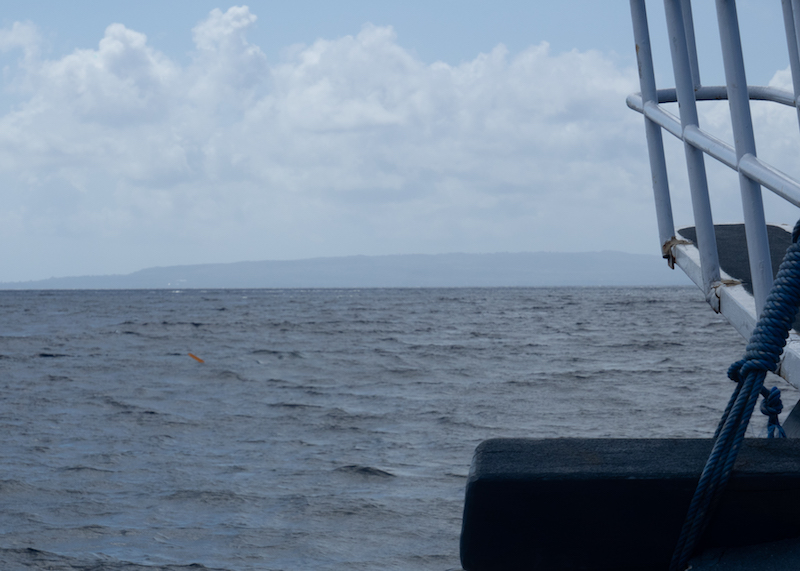
My Undercurrent writeup of our experience at Wakatobi is linked here (but if you are a diver you should really subscribe to Undercurrent).
After 10 days at the resort we boarded their liveaboard Pelagian.
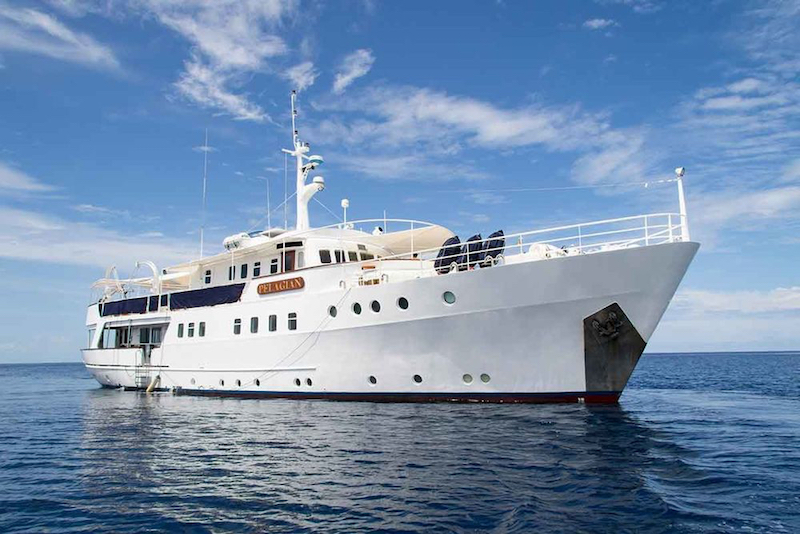
Where we treated in the same style:
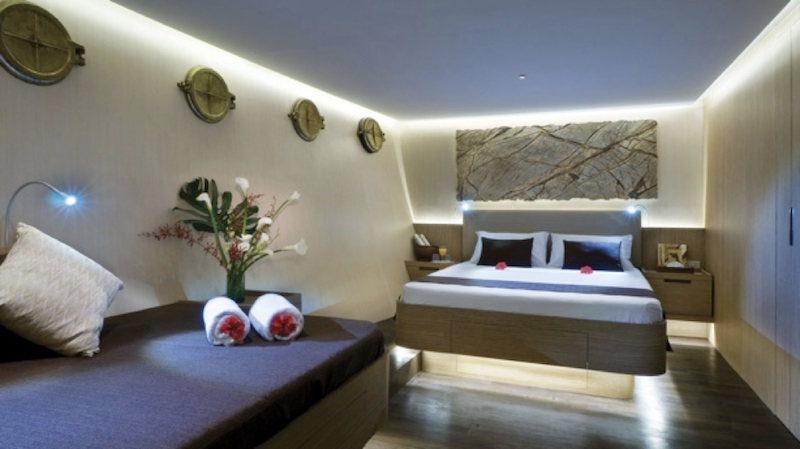
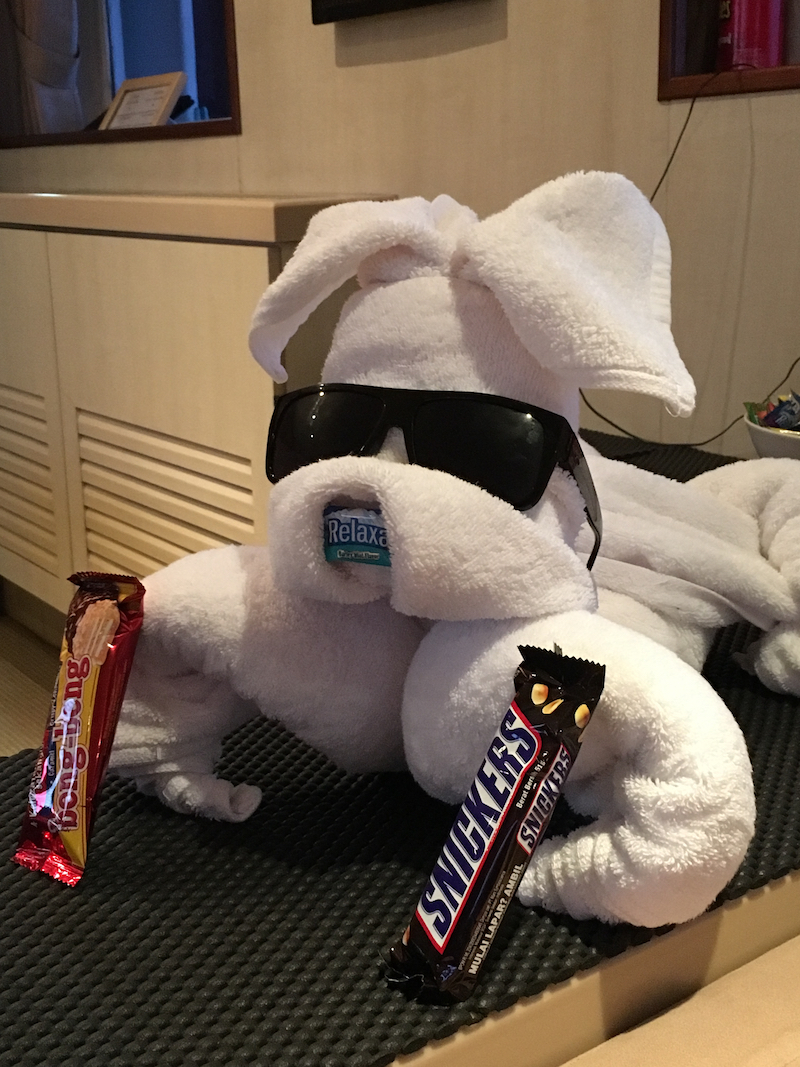
Amanda and Joshua were the cruise directors and doubled as dive guides; Khotaman was the third member of this excellent group. My Undercurrent writeup of our experience on the Pelagian is linked here (but if you are a diver you should really subscribe to Undercurrent).
We toured the Wakatobi region
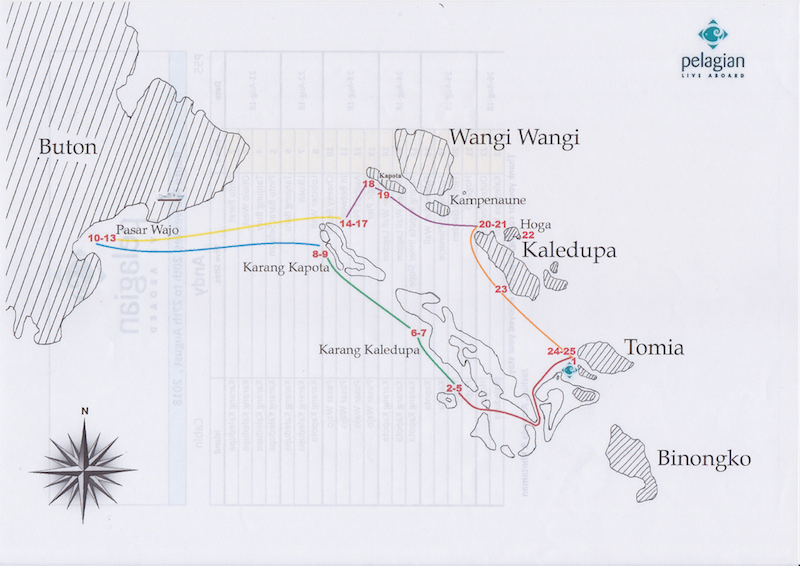
including a full day at Pasar Wajo off Buton, which is home to muck diving (every photo showing black sand was a muck dive). Muck diving features strange and wonderful creatures rather than beautiful reefs (all the other dive sites).
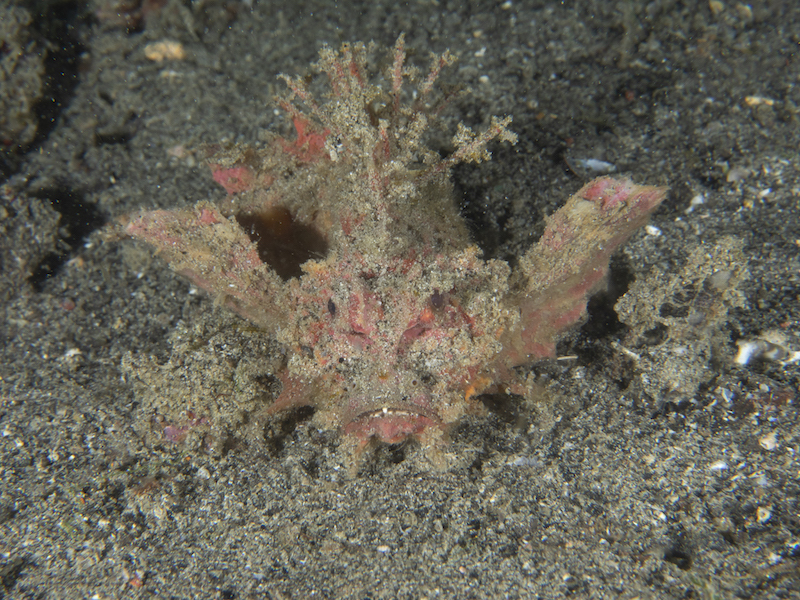
After the diving we spent 3 nights at the magnificent Amandari relaxing - a real treat. We are now apparently certified "AmanJunkies" and have received the t-shirts.
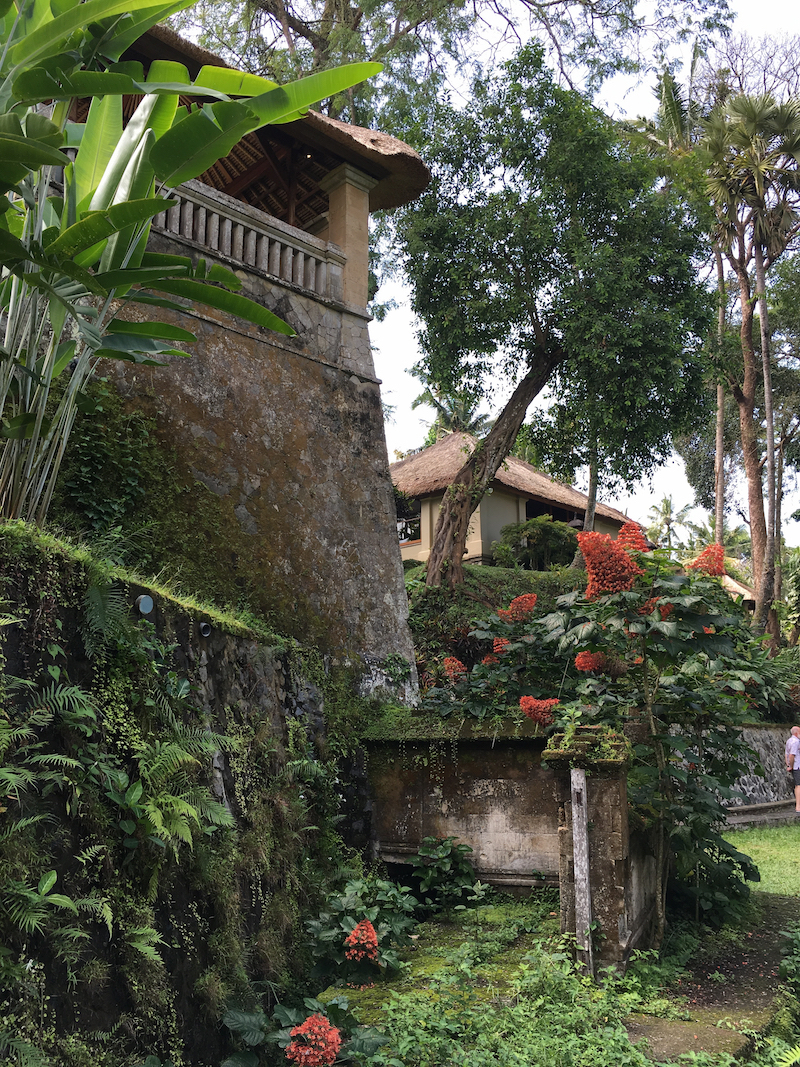
Bali is strongly Hindu with shrines and temples everywhere
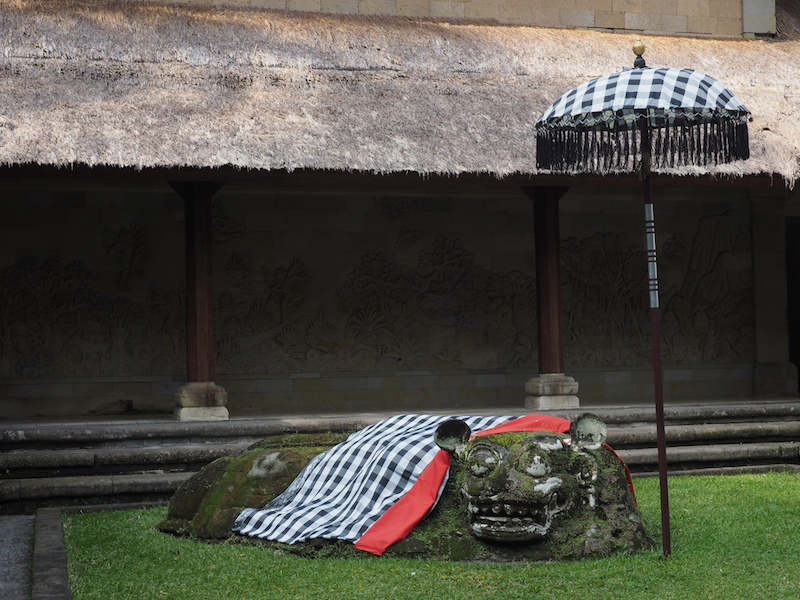
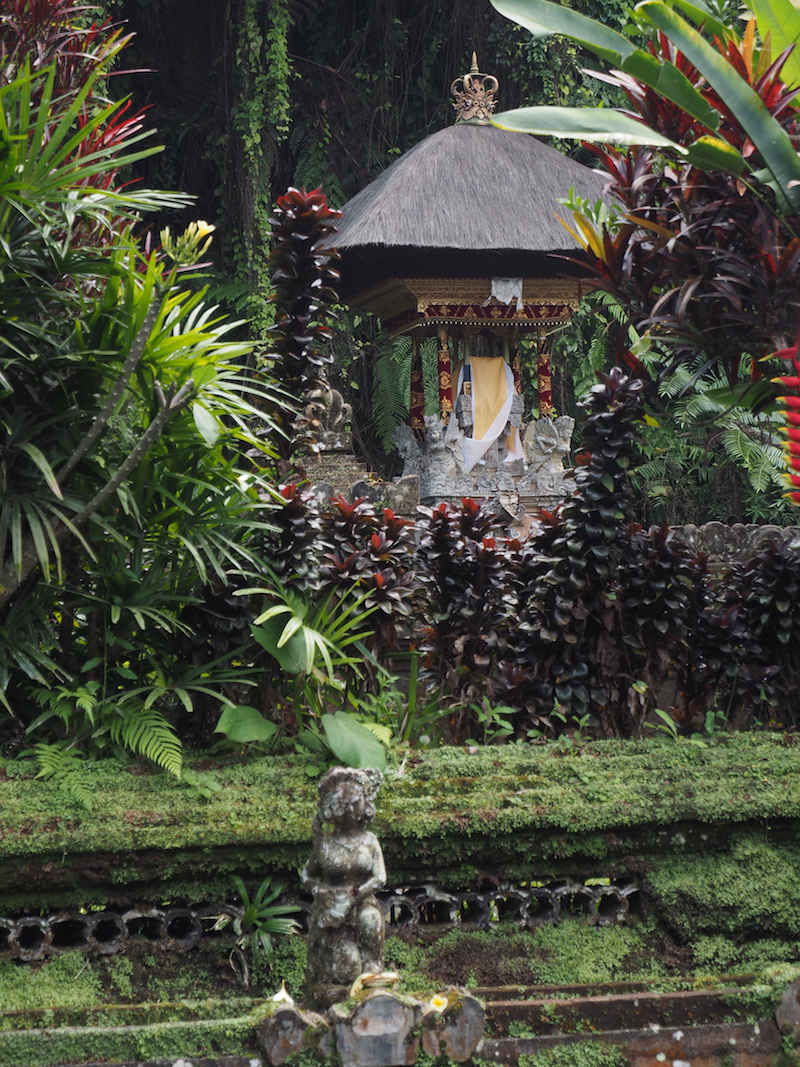
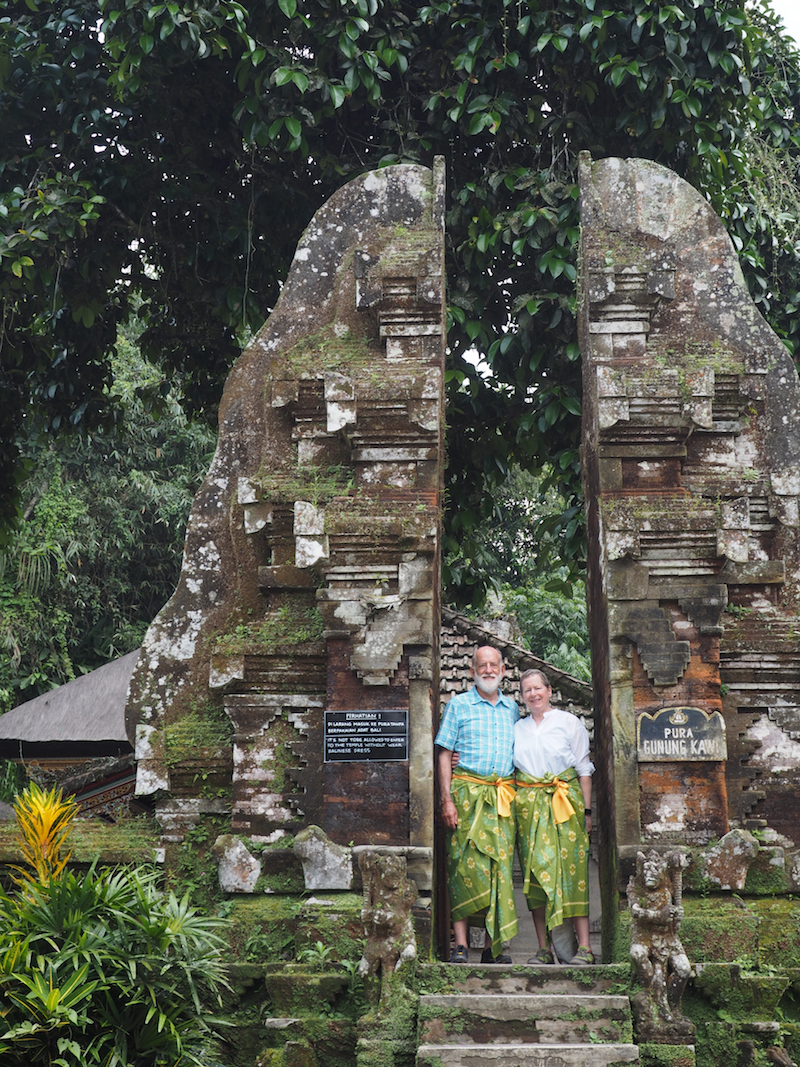
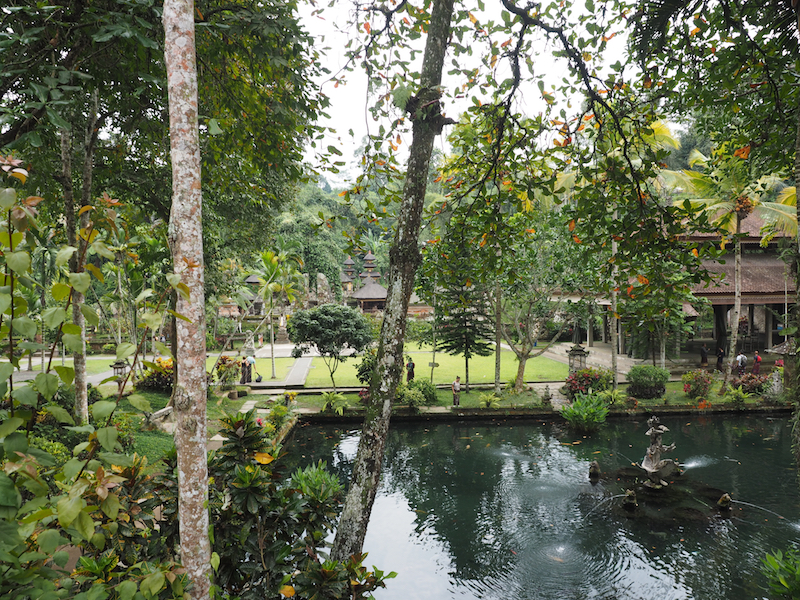
And, of course, beauty


Eventually we had to leave Bali and say farewell to Mount Agung
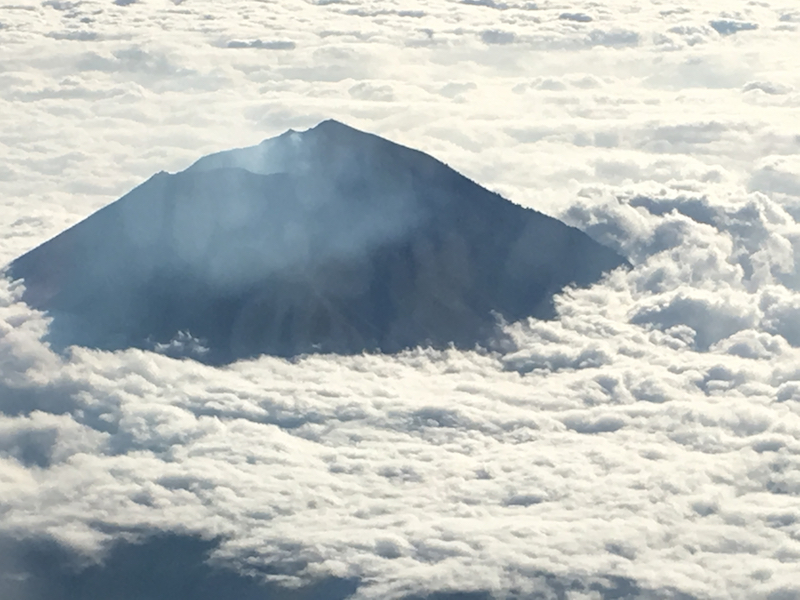
but we have a reservation for September 2020!
A few words on the identifications that I give in the photos. Identification is an effort fraught with issues. Underwater creatures have the distressing propensity to have different colors, patterns and even features for the same species. The key piece of information to identify a creature may not be in the photograph (either because it was hidden or I didn't know it needed to be recorded). Identification books show a single photo when the reality is much more complicated. But I carried on, occasionally asking Kaz, who really knows this stuff, for help. So the identifications given in my photographs are those of an untrained amateur! If you have any corrections, I'm happy to hear them!
Here's a sample of what I mean - my photo that I'm using to identify the fish and the photo/writeup in Tropical Pacific Reef Fish Identification.
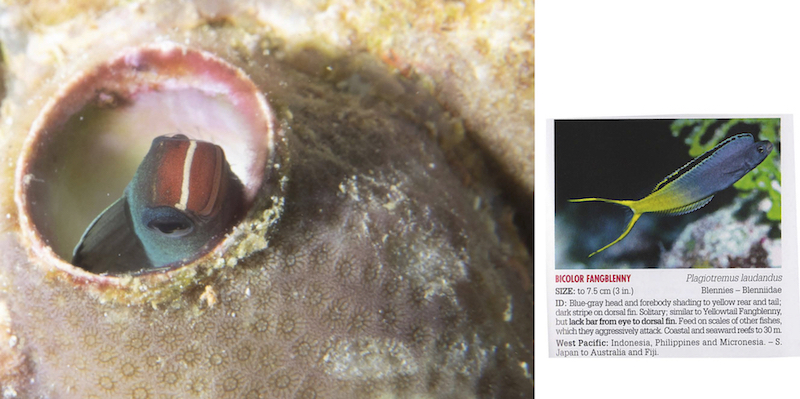
One other thing that doesn't come across well in the photos is scale, so here are a few photos which include the guide's pointer stick which they use to show us what they've found. The pointer has a diameter of 1/4". Just recall these when you look at some of the photos.
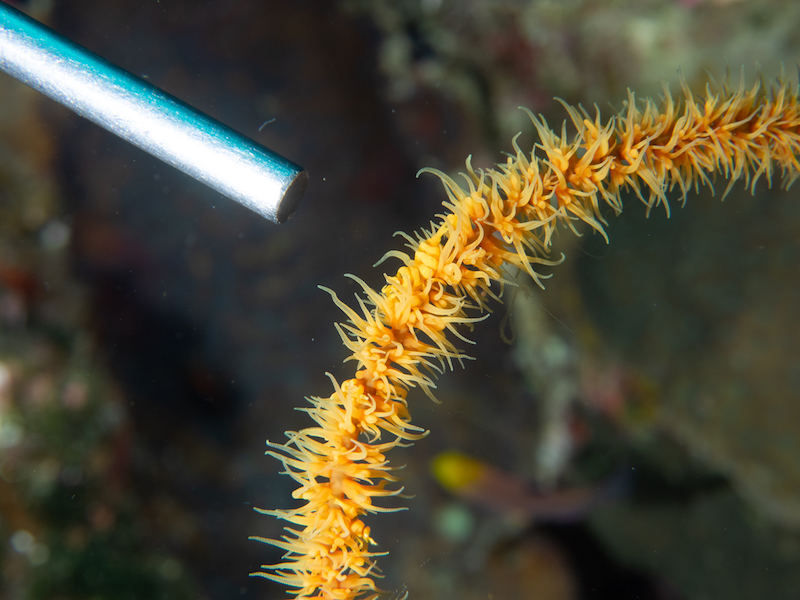
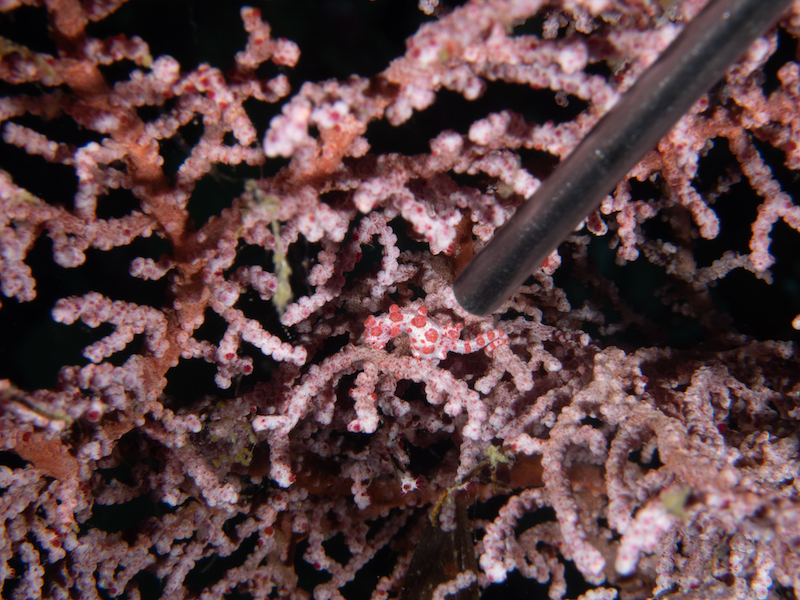
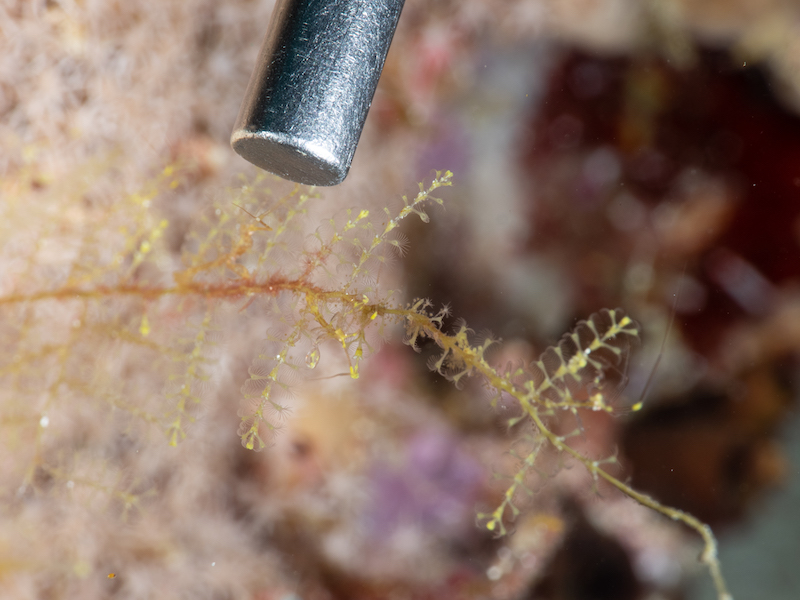
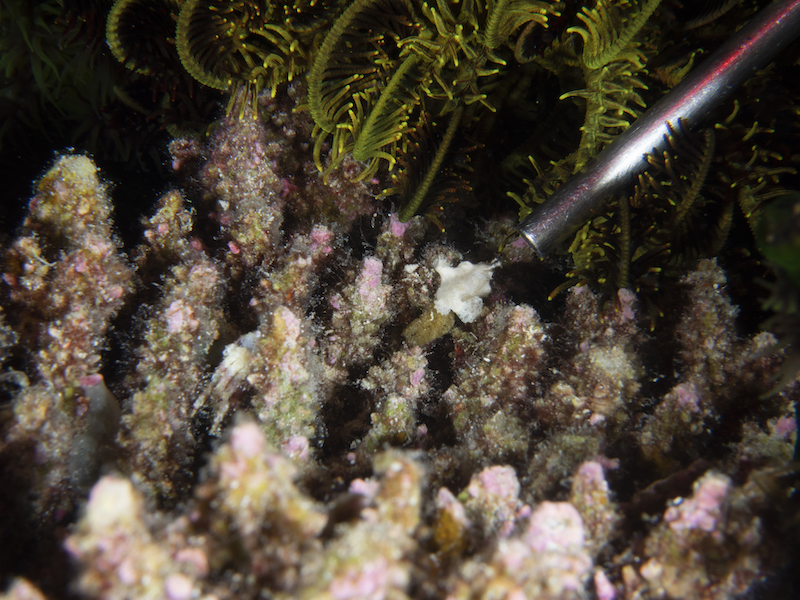
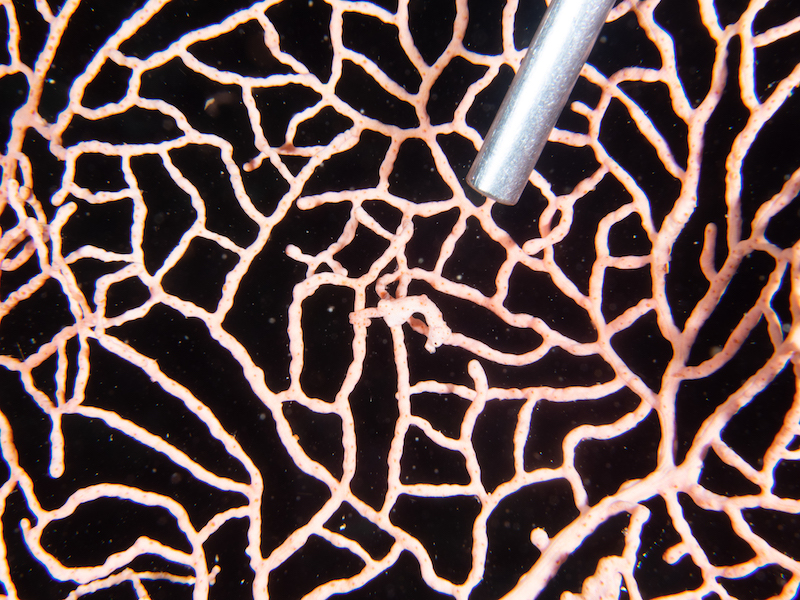
The whole trip was just amazing!
My underwater photos are linked here.